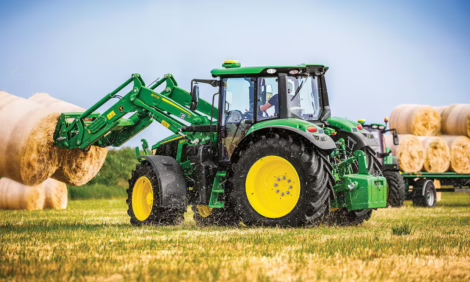



Late Harvest: What Exactly Is Your Crop Losing?
US - A multi-year study shows the effects of plant population and stalk strength on late-harvested corn yields.The longer the crop stands in the field, the more ways damage can occur, according to a team of Ohio State University agronomists.
Leaving corn to dry in the field exposes a crop to unfavourable weather conditions, as well as wildlife damage. A crop with weak plant integrity is more vulnerable to yield losses from stalk lodging and ear drop when weathering conditions occur. Additional losses may occur when ear rots reduce grain quality and can lead to significant dockage when the grain is marketed. Some ear rots produce mycotoxins, which may cause major health problems if fed to livestock.
"Several years ago we conducted a study that evaluated effects of four plant populations (24,000, 30,000, 36,000 and 42,000 plants/acre) and three harvest dates (early-mid October, November and December) on the agronomic performance of four hybrids differing in maturity and stalk quality," according to an Ohio State University Extension report by agronomists Peter Thomison, Allen Geyer and Rich Minyo. "The study was conducted at three locations in northwest, northeast and southwest Ohio over a three-year period for a total of eight experiments. Many growers are currently weighing the risk of allowing corn to field dry. Results of this study provide some insight on yield losses and changes in grain moisture and stalk quality associated with delaying harvest. The following lists some of the major findings from this research."
Key findings of the research include:
- Results showed that nearly 90 per cent of the yield loss associated with delayed corn harvest occurred when delays extended beyond mid-November.
- Grain moisture decreased nearly six per cent between harvest dates in October and November. Delaying harvest after early to mid Nov. achieved almost no additional grain drying.
- Higher plant populations resulted in increased grain yields when harvest occurred in early to mid-October. Only when harvest was delayed until mid-November or later did yields decline at plant populations above 30,000/acre.
- Hybrids with lower stalk strength ratings exhibited greater stalk rot, lodging and yield loss when harvest was delayed. Early harvest of these hybrids eliminated this effect.
- The greatest increase in stalk rot incidence came between harvest dates in October and November. In contrast, stalk lodging increased most after early-mid November.
- Harvest delays had little or no effect on grain quality characteristics such as oil, protein, starch, and kernel breakage.
In the study, agronomists say yields averaged across experiments, populations and hybrids decreased about 13 per cent between the October and December harvest dates. Most of the yield loss, about 11 per cent, occurred after the early-mid Nov. harvest date. In three of the eight experiments, yield losses between October and December harvest dates ranged from 21 per cent to 24 per cent. In the other five experiments, yield losses ranged from 5 per cent to 12 per cent.
Grain moisture content showed a decrease from the October to November harvest dates but little or no change beyond the Nov. harvest dates. Grain moisture, averaged across experiments, hybrid, and plant population, decreased 6.3 per cent points between the October and December harvest dates, with most of the decrease occurring between the October and November harvest dates (5.8 per cent points); only a 0.5 per cent point decrease occurred after early-mid November. Population effects on grain moisture content were not consistent. Differences in grain moisture were evident among hybrids on the first harvest date in early-mid October but were generally negligible on the later dates.


